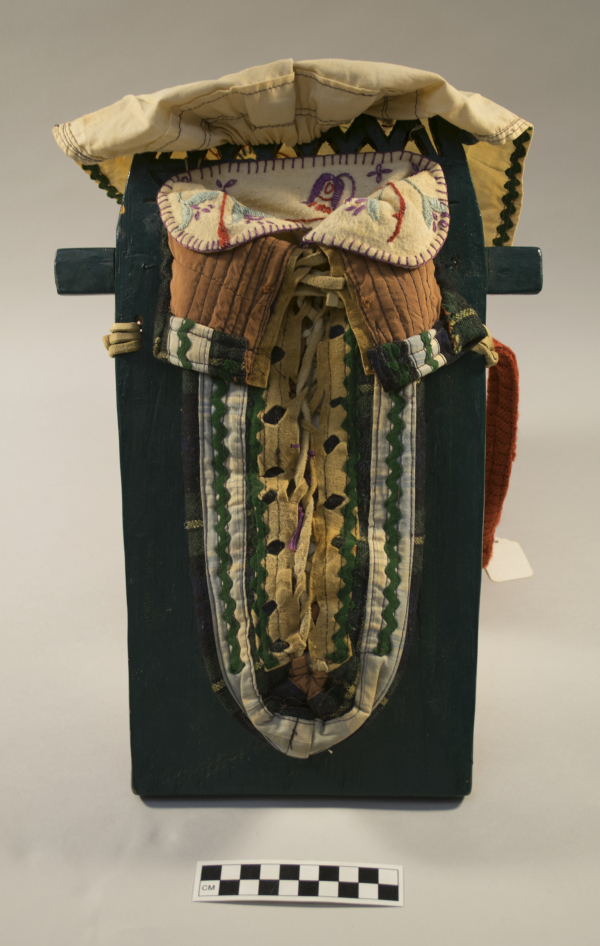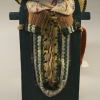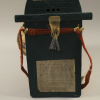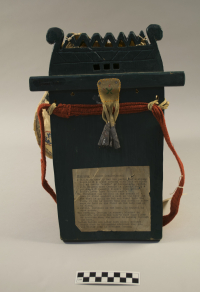tikinaagan
tikinaagan
tikinaagan



Miniature or toy cradleboard. Wooden board painted green; cloth cover; green plaid cloth and leather moss bag. Butterflies are embroidered on the cloth cover. Metal cones on rawhide fringe.
The Peabody Museum of Archaeology and Ethnology lists the origin as the Southeastern Ojibwe of Canada.
The Peabody Museum of Archaeology and Ethnology at Harvard University
Read More About This Relative
Wood, Plaid Cloth, Rawhide, Ribbon and Paint.
The backboard is a plank of cedar or birch. A crossbar piece is soaked in hot water or steamed and carefully bent. The crossbar protects the child. It also can be used as a handle to lift the tikinaagan. The women sew the tikinaagan covering using hide, cloth, sinew, thread, beads, embroidery, and porcupine quills. A moss bag is made from animal hide, cotton linen, and lace.
The wooden plank is cut into a rectangle shape and painted green. On its headboard, there are carved triangle symbols. The covering for the tikinaagan has embroidered images of butterflies. Inside the butterflies, there are circular shapes, straight lines and wavy contours. The moss bag is made with plaid fabric. The outer portion of the moss bag has green rick rack trim sewn on it. The rawhide strings are used for lacing the infant inside the moss bag. The moss bag keeps the infant warm and comfortable, just like the baby was in the mother's womb.
The tikinaagan primary purpose is to safely carry the baby on the mother's back while she worked or moved from one camp to another. Both mother and baby would accompany each other while harvesting berries and medicine. The baby is laced into the cradleboard under a protective covering to keep away the underbrush and insects. Its secondary purpose is childcare. It is used to keep the baby near the mother. The tikinaagan is usually placed against the trunk of a tree or hung from a branch. From this vantage point, the baby could watch the mother and her social interactions. The tikinaagan is constructed with a crossbar. Its function is to protect the baby in case the tikinaagan falls. A third benefit was how the cradleboard kept the baby's back and legs straight.
Peabody Museum's records.
Provenance
In 1983, John Nichols sold the tikinaagan to Byron Harvey, III. In 1984, Byron Harvey donated the tikinaagan to the President and Fellows of Harvard College. It was then displayed in the Peabody Museum of Archaeology and Ethnology at Harvard University.
The Peabody Museum of Archaeology and Ethnology: Display Title: cradleboard
 Knowledge Sharing Platform
Knowledge Sharing Platform


